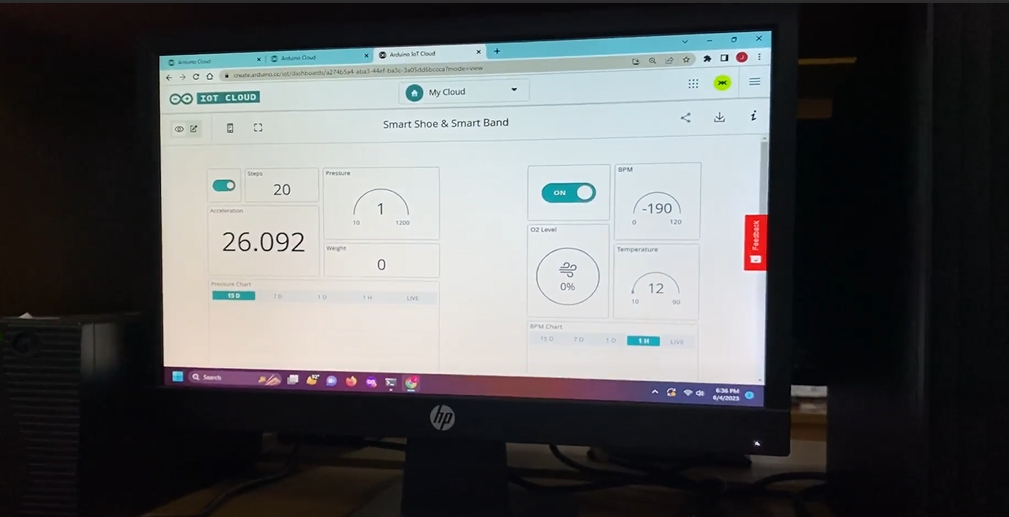An IoT-based smart shoe for health monitoring can be a valuable tool for tracking various metrics related to physical activity and overall health.
Step Counting: The shoe can track the number of steps you take throughout the day, providing insights into your overall activity level.
Calorie Expenditure: Based on the steps taken and the distance covered, the shoe can estimate the number of calories burned, giving you an idea of your energy expenditure.
Foot Pressure Mapping: The shoe can measure pressure points and weight distribution while walking or running, helping to identify potential issues or imbalances in your stride.
Heart Rate Monitoring: Some smart shoes may include sensors that can measure your heart rate, providing insights into your cardiovascular health and exercise intensity.
Real-time Feedback: The shoe can connect to a smartphone app or other devices via Bluetooth or Wi-Fi, allowing you to receive real-time feedback on your activity level, progress, and performance.
- BMI measure: Take weight from every step and calculate BMI.
Based on the measured BMI, here are some general guidelines exam for a healthy diet using ML:



